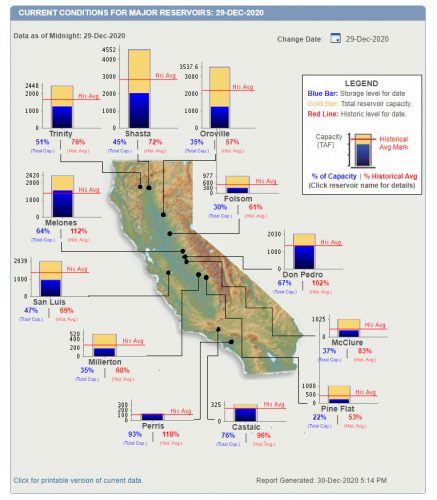Sonora, CA – The first manual mountain snowpack reading showed a slow start to the season with the late December storms not enough to offset California’s dry fall, but it is still early.
While an automated sensor network on 260 snow courses statewide found the snow-water content to be 52% of average to date, the numbers were better at today’s’ first Department of Water Resources (DWR) manual snowpack reading at the Phillip Station near Lake Tahoe. The measurement found 30.5 inches of snow with a water content of 10.5 inches, which equates to 93% of average to date and 42% of the April 1 average, the key date when the snowpack is typically at its peak.
“The snow survey results reflect California’s dry start to the water year and provide an important reminder that our state’s variable weather conditions are made more extreme by climate change,” said DWR Director Karla Nemeth. “We still have several months left to bring us up to average, but we should prepare now for extended dry conditions. The Department, along with other state agencies and local water districts, is prepared to support communities should conditions remain dry.”
Fall 2020 has been extremely dry, especially in the Sierra Nevada, and comes on the heels of last year’s below-average snow and precipitation. Sean de Guzman, chief of the department’s snow surveys says, “It remains critical that all Californians make water conservation a way of life.”
There is still hope on the horizon as two-thirds of the wettest months January and February are yet to come. Guzman adds, “Today’s survey brought a first glimpse of how the state’s snowpack is shaping up, but there is a lot of winter still ahead. While the dry conditions during late summer and fall have led to a below-average snowpack, it is still encouraging to have the amount of snow we already have with two of the three typically wettest months still to come.”
The chart below shows the current conditions at the state’s major reservoirs including New Melones, Don Pedro and Lake McClure.




